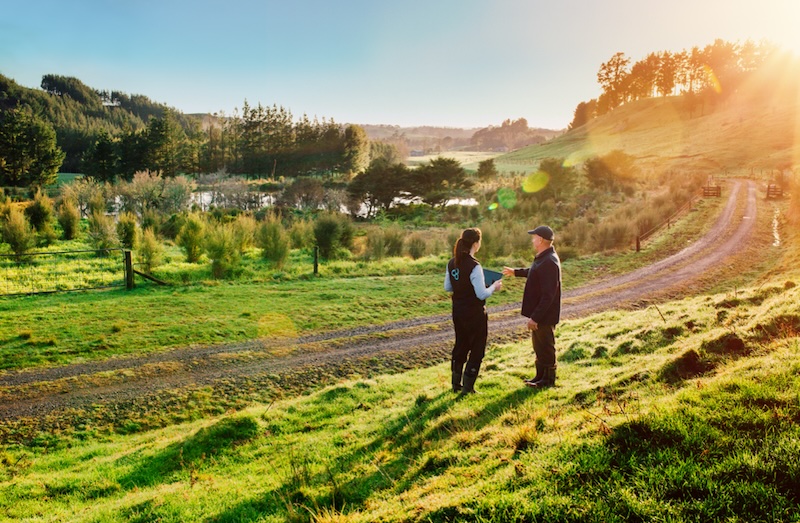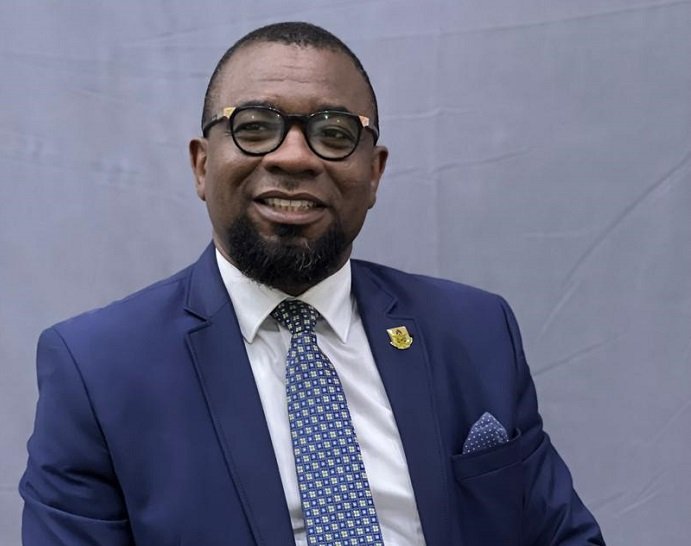The race for the west Wellington seat includes a high profile National challenger and a Labour incumbent with a strong majority.
For decades, the Wellington electorate of Ōhāriu was firmly associated with Peter Dunne. The bowtie-wearing leader of United Future was a safe incumbent from 1984 to 2017, until his decision to quit politics. Since then the seat, which encompasses suburbs like Ngaio, Khandallah, Johnsonville and Newlands, has been somewhat up for grabs. It’s not fair to label it a bellwether – a seat that can be predictive of the nationwide political mood – at least according to one of this year’s contenders. But while Labour’s Greg O’Connor currently holds a strong 12,000 vote majority, re-election on October 14 isn’t a foregone conclusion. He’s facing a tough battle against National’s deputy leader and finance spokesperson Nicola Willis, a high profile opponent who is mounting a competitive, on-the-ground campaign to finally secure herself an electorate seat.
O’Connor is banking his political career on another win in Ōhāriu. He’s running electorate-only, opting to shift off the list because he says he is most passionate about being a local representative. Willis is pitching herself as a future cabinet minister, and says the people of Ōhāriu grew accustomed to that level of representation during the Dunne years. With no public polling available, the only gauge on which way the votes will fall on election night comes from on-the-ground messaging – and both major party candidates are campaigning hard. Throw in the outsiders like TOP’s Jessica Hammond, and Ōhāriu is on track to be one of this election’s most fascinating races.
An old seat with a new-ish name
The Ohariu electorate (sans macrons) was first formed in 1978, replacing the pre-existing seat of Karori. By 1993 it had been disestablished, with many of the suburbs becoming part of the then Wellington-Karori and Onslow seats. In 1996, under New Zealand’s first MMP election, the Onslow seat was renamed Ohariu-Belmont and enlarged to include Belmont and the Hutt Valley. In 2008, Ōhāriu was formed, with the Upper Hutt seat of Remutaka picking up areas like Belmont.
According to data provided during the 2018 Census, the Ōhāriu electorate is more than two-thirds European (70.9%), with almost 23% Asian (22.8%). Over half of families are couples with children and 72% are homeowners either through individual ownership or in a trust.
National’s Hugh Templeton was the first to win the seat, with Peter Dunne, then a Labour MP, winning it for the first time in 1984 and holding it for three decades.
The passionate incumbent
Greg O’Connor has been an MP since 2017. A former police officer of almost 40 years, O’Connor swept into the west Wellington seat off the back of Peter Dunne’s decision to retire from politics. His candidacy for Labour generated minor controversy, after it was revealed he had received a waiver from Labour as he had not been a member of the party for 12 months prior to his nomination.
With no incumbent standing in that election, and Dunne being from neither of the two major parties, the 2017 race was a close competition between O’Connor and National’s Brett Hudson. Ultimately, O’Connor pulled ahead and managed to secure a tight victory with a 1,000 vote majority. He increased that significantly in the 2020 election, riding the red wave to a win against Hudson again – this time by 12,000 votes.
But going into this year’s election, and despite holding such a big majority, O’Connor is facing new challenges. Not only are the nationwide polls shifting against Labour, but National’s candidate Nicola Willis is a recognisable face to many. O’Connor says he’s anything but complacent. “Every election is new,” he told me earlier this year. “And as far as I’m concerned, if you don’t treat every election as a 50-50 then you shouldn’t be there. Every vote is earned and re-earned, so it’s a little bit like when you’re advised how to select a financial adviser. Previous success is not necessarily an indicator of future success.”
O’Connor echoed these remarks during a recent campaign appearance alongside prime minister Chris Hipkins. “The moment you think you don’t have to earn every vote, you’re on the back foot,” he said. “I’ve been on the ground here… omnipresent, and I’m just hoping that being available to the people of Ōhāriu will be enough to entice them to vote for me.”
But recent comments made by O’Connor at public events would suggest his quiet confidence is slipping, at least in terms of the party vote. As reported by The Post last week, O’Connor told a public meeting that “unless something changes… Nicola [Willis is] likely to be the next minister of finance”. He made a similar comment at another meeting, telling those in attendance that as an electorate-only candidate, people should vote for him because Willis was “likely” to be a minister. “Polling going the way it is, she’s likely to be a minister,” he said.
And on a third occasion, he was reported as saying: “there’s probably a very good chance that if the polls stay the way they are, [Willis will] end up a cabinet minister in the next government”. None of these comments suggest confidence of a Labour Party victory come October 14, but they also indicate O’Connor’s desire to stay on as an electorate MP whether his party is in government or not.
While Willis is pitching herself as a minister-in-waiting, O’Connor told The Spinoff in August that it’s tricky to balance both roles. “Your ability to service your electorate and to have that broad brush understanding of issues across the board is relatively limited,” he said.
The minister-in-waiting
Nicola Willis has had a rapid ascension through the National Party in a relatively short period of time. A late addition to parliament after a resignation in 2018, she started off in the furthest reaches of National’s back benches. It wasn’t her first foray into politics, however. She had been a staffer under former leaders John Key and Bill English, roles that set her up for future success as a parliamentarian.
By 2020, she was starting to climb through the ranks and played a crucial role in the ousting of Simon Bridges as party leader. Through the short tenure of Todd Muller and the crushing election defeat under Judith Collins, Willis was seen as a star player within National’s caucus – potentially a future leader. By late 2021, she had moved into number two behind new leader Christopher Luxon and later picked up the all-important finance portfolio. There are shades of Jacinda Ardern in her political career, moving quickly from political staffer, to inner-city electorate campaigns to the deputy leader of an opposition party.
But despite her growing public profile, Willis has never been an electorate MP – not that she hasn’t tried. She campaigned twice in the Wellington Central electorate, losing both times against her current finance sparring partner Grant Robertson. She may have had a better shot there this time around, with Robertson and Greens co-leader James Shaw opting to go list-only for the 2023 election. However, by the time that was known, Willis had already thrown herself in the ring for Ōhāriu.
“I think the honour of truly representing people – being able to be the one that fights for a constituent, no matter what the issue is, removed from left and right politics but more ‘how can I be your advocate’ – there’s something very rewarding about that,” she told me of her desire to be a local MP.
During an afternoon spent door-knocking with Willis, she would often tell potential voters that she would like to be their “representative in cabinet”, explaining that Ōhāriu always had Peter Dunne relaying concerns back to senior government officials.
She doesn’t think it’s fair to characterise Ōhāriu as a “bellwether” seat, but believes the on-the-ground mood reflects a growing momentum for her campaign and National’s. “I think the shift that I’ve noticed is that in my initial stages of putting myself forward as the candidate, a lot of the doors that I knocked on, people would say ‘it’s great the deputy leader of the National Party’s on my doorstep… tell me who is your candidate in Ōhāriu?’ and I would say ‘it’s actually me’.”
The outliers
Ōhāriu appears to be a two-horse race between the major parties, but upsets can and do happen in politics. The battle for Ōhāriu includes five other candidates, three of whom represent parties not currently in parliament. Stephanie Rodgers is number 20 on the Green Party list, meaning that on current polling she would need to secure a surprise victory in Ōhāriu in order to make it into parliament. Her background, according to Policy.nz, is in communications and campaigns. “I’ve worked in the union movement, public service and parliament, as a political commentator, event MC and YouTube board game reviewer. I knit, I pole dance, and I occasionally garden,” she says.
The Opportunities Party’s Jessica Hammond is contesting Ōhāriu for the third election in a row. The party is consistently polling well below the 5% threshold, again meaning that a major upset – or significant rise in TOP’s polling – would be needed for Hammond to become an MP. “I bring a mixture of irrepressible optimism and pragmatism to almost everything I do,” her Policy.nz bio reads.
Others contesting the seat include Act Party’s 60th ranked candidate Paul Day, Vision NZ’s Patrick Lim and Martin Jenkins, who is representing the Protect & Prosper New Zealand party.





















Discussion about this post